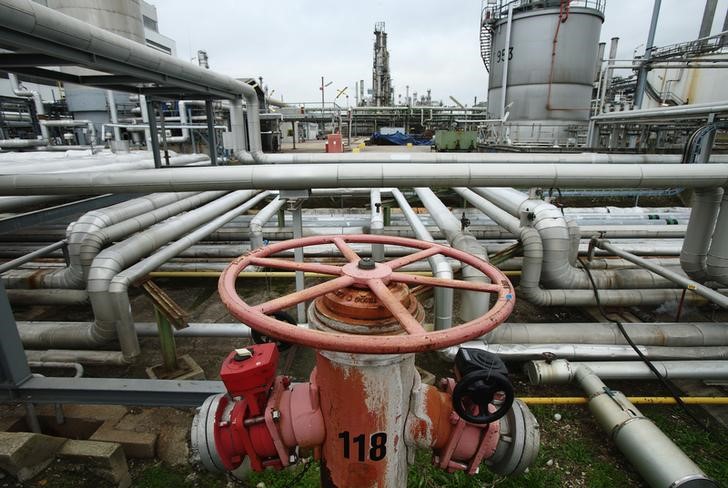EOG Resources completes $5.6 billion acquisition of Encino Acquisition Partners
* EIA says U.S. crude stocks up by 13.5 mln bbls
* OPEC fails to agree on emergency talks, pumps more in
March
* Trump says he may join Saudi and Russia in talks on oil
prices
* 'Oil market is officially broken' -Rystad Energy
(New throughout, updates prices, market activity and comments;
new byline, changes dateline, previous LONDON)
By Laura Sanicola
NEW YORK, April 1 (Reuters) - Brent crude fell while U.S.
futures dipped before recovering on Wednesday, after U.S. crude
inventories rose last week by the most since 2016, while
gasoline demand fell sharply due to the coronavirus pandemic.
Crude inventories USOILC=ECI rose by 13.8 million barrels
in the week to March 27 to 469.2 million barrels, the U.S.
Energy Information Administration said Wednesday. That was the
biggest one-week rise since 2016, and analysts expect stocks to
keep rising as refineries curb output and gasoline demand falls.
West Texas Intermediate (WTI) crude CLc1 rose 6 cents, or
0.3%, to $20.54 by 1515 GMT. June Brent LCOc1 June Brent crude
LCOc1 fell $1.11, or 4.2%, to $25.24 a barrel. WTI traded at a
session low of $19.90 a barrel.
Brent had fallen to $21.65 on Monday, its lowest since 2002,
when the now-expired May contract was the front month.
The market has slumped on pledges of higher output from
Saudi Arabia and Russia after a supply pact collapsed and the
sharp fall in demand because of the coronavirus pandemic. Global
benchmark Brent crude fell 66% in the first three months of 2020
- its biggest ever quarterly loss.
"Global inventories will be chock full by mid-May. I think
the market can continue to decline further," said Gene
McGillian, a broker and oil analyst at Tradition Energy.
"There's no signs of reproachment with producers and with
further demand destruction we could get another $5 taken from
the market."
U.S. state governments have issued orders trying to halt the
spread of the virus, and many residents are staying out of cars.
Gasoline demand fell by the most ever in one week, with products
supplied, a proxy for demand, dropping by 2.2 million barrels
per day to 6.7 million bpd. That augurs for more refining
cutbacks down the road. "April will be one of the toughest months in history for
oil, and this is no April fool's joke," said Bjornar Tonhaugen
of Rystad Energy.
"The market is oversupplied in April to the tune of 25
million barrels per day. There's nowhere to hide from this
tsunami of oversupply."
The bearish mood has been fueled by a rift within the
Organization of the Petroleum Exporting Countries (OPEC). Saudi
Arabia and other OPEC members have been unable to agree to a
technical meeting in April to discuss sliding prices.
An OPEC-led supply deal fell apart on March 6 when Russia
refused to cut output further. Saudi Arabia has already begun to
boost output, a Reuters OPEC survey showed on Tuesday, and is
expected to pump more in April. OPEC/O
"It is very unlikely that OPEC, with or without Russia or
the United States, will agree a sufficient volumetric solution
to offset oil demand losses," BNP Paribas analyst Harry
Tchilinguirian said in a report on Tuesday.
U.S. President Donald Trump on Tuesday said he would join
Saudi Arabia and Russia, if need be, for talks about the fall in
oil prices.
